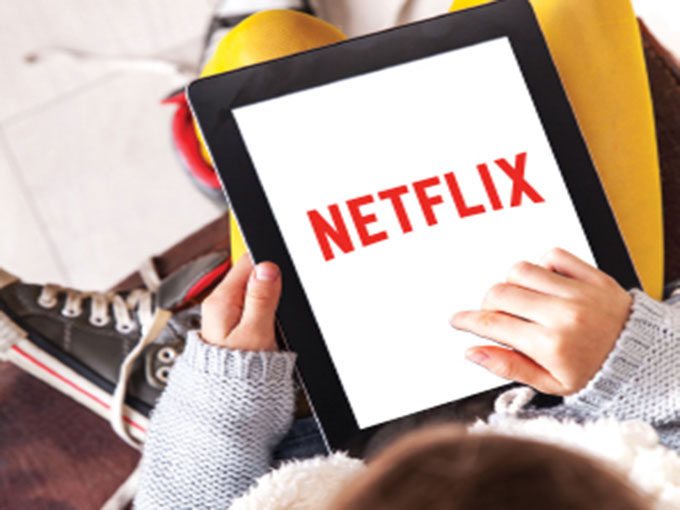Netflix released its latest quarterly results earlier this week, with the company showing renewed strength in its ability to hit major revenue and subscriber growth targets—a big win after falling short on some of those key metrics last year.
All tallied, Netflix rang in US$1.8 billion in global revenues in Q1 2016 and added 6.74 million subscribers worldwide, bringing its total subscriber base to 81.5 million, slightly ahead of previously projected targets. Of the total subscribers, 42% are now outside of the US, meaning the SVOD giant’s global expansion plans are bearing fruit.
But despite its strong showing financially, Netflix hasn’t been faring well on Wall Street.
By the closing bell on April 15, Netflix shares were priced at US$111.80. On Monday, the company’s shares dropped to US$106.83 (by 2 p.m. ET), a tumble largely attributed to an announcement made by SVOD competitor Amazon that it would be unbundling Prime Video from its Prime services and offering it at a monthly subscription fee (as opposed to its previous annual fee).
By April 19, Netflix opened at US$99.47 pre-trade. At press time, shares were priced at US$96.18, according to Yahoo Finance.
Still, Netflix execs seemed determined to focus on the positive. In a live-streamed interview with analyst Benjamin Swinburne of Morgan Stanley and Re/Code senior editor Peter Kafka, Netflix CEO Reed Hastings dismissed the idea that competing SVODs Hulu and Amazon were a major threat, adding that Netflix is different from the rest of the pack because of its strong focus on growth outside of the US market.
Hulu remains US-only, while Amazon Prime Video operates in the US, UK, Austria, Germany and Japan. HBO recently unveiled plans to launch its HBO Go service in Spain, Brazil and Argentina by the end of 2016, and Showtime’s SVOD, Sho, is only available in the US.
Netflix, meanwhile, is now in 190 countries worldwide, following its 130-country international rollout earlier this year.
Its global operations, as predicted in Q4 2015, were a loss for the company in Q1 2016 following the recent international push. Despite ringing in US$652 million in international revenues, Netflix posted a loss of US$104 million for its non-US services during the period.
International expansion has always been a costly venture for Netflix. After launching in Canada in 2011, it took Netflix four years to become profitable in the country. With many territories in its most recent round of expansions, Netflix has opted to pair with local telcos in order to ease its transition into new markets. This time around, the SVOD has again acknowledged that there are still various challenges related to language and payment with its new territories. The service is only provided in English and is accepting of international credit cards.
However, Netflix’s domestic subscription numbers performed better than expected in Q1. It added 2.23 million new members in the quarter, up from a deliberately modest forecast rate of 1.75 million. Still, overall growth in the US has slowed over the past two years. In Q1 2015, the SVOD added 2.28 million new subscribers, and 2.25 million in Q1 2014.
In all, the SVOD now has nearly 47 million subscribers in the US.
Kaan Yigit, president of Toronto,Canada-based Solutions Research Group, says Netflix likely won’t spend time wringing its hands over slowed US growth—or its tough time on the markets.
“If you look at the history of Netflix stock prices or subscriber growth numbers, it’s always been back and forth periods of growth followed by a slowdown. Investments in content take time to scale up,” Yigit says. “While it is true that subscriber growth will be slower in the US, I think the international side will begin to kick in at a higher rate of growth in about a year to 18 months.”
Michael Gubbins, an analyst with London-based media consultation firm Sampomedia, believes that, despite Hastings’ confidence, Netflix should watch its back, especially when it comes to Amazon.
“Amazon is now a true competitor, but it reached that place via a different, largely unexplored route. In both cases, (Amazon and Netflix) have been moving away from ‘pile-em-high’ volume services and towards quality offerings with exclusive content,” says Gubbins.
Recently, Netflix has also been dogged by news of an upcoming price hike, even for grandfathered subscribers. Netflix had announced in 2014 that it would hold the US$7.99 subscription price for existing customers for two years. As the deadline looms closer, the price hike has become top-of-mind for many users.
In its Q1 shareholder letter, Netflix confirmed it “hopes to maintain” the US$7.99 price. However, on its website, the SVOD indicates the US$7.99 rate will only buy a single stream and no longer support HD and UHD content.
Currently, new subscribers can buy a standard package (with HD) for two streams for US$9.99 per month. Premium service, with four streams and UHD, is US$11.99 per month.
Yigit believes that the Netflix price hike will have little impact, citing recent research by his own company that found 80% of Netflix subscribers report a high likelihood of recommending the service to someone else.
“This is significant because it tells us that the subscriber base is sufficiently happy, and therefore a US$1 or US$2 increase can be absorbed without risk of significant churn,” he says.
From Stream.
























